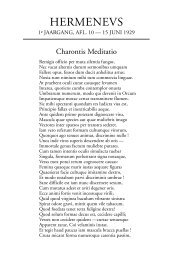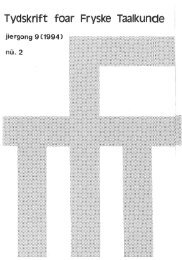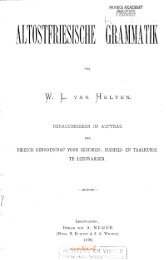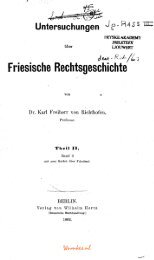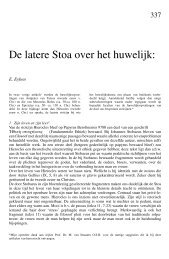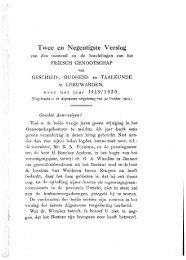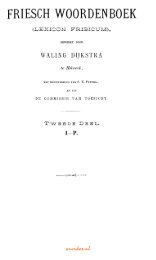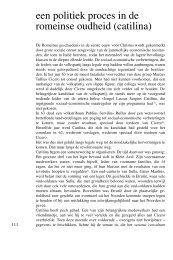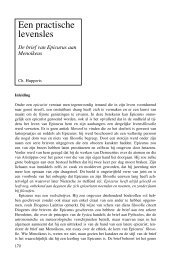It wurk fan Gysbert Japix n-2 - Tresoar
It wurk fan Gysbert Japix n-2 - Tresoar
It wurk fan Gysbert Japix n-2 - Tresoar
Create successful ePaper yourself
Turn your PDF publications into a flip-book with our unique Google optimized e-Paper software.
Momus be associated with work of literary quality? And did GJ employ them to exclude<br />
misunderstandings about the nature of his Frisian book straight away?<br />
Friesche Tjerne (I 1-6)<br />
The poem can be classified as belonging to the epithalamion genre. <strong>It</strong> seems to<br />
have been conditioned not by thepraecepta, but by the exempla. The genre has been<br />
utilized, so to speak, in order to realize a playful poem which closely links up with<br />
comical nuptial songs in dialect, of which so many find a place in seventeenth Century<br />
song books. Yet, the text is not a farce. Tjerne may be a farmer, it is true, but he is<br />
special in that he evokes an idyll by breaking class-distinctions. This idyll assumes<br />
an appearance of reality through its setting in time and place: Bolsward and vicinity<br />
about 1640.<br />
Tjerne and Sjolle Kreamer of presumably the same time are probably GJ's earliest<br />
Frisian texts. Of particular importance for the origin of his writing Frisian verse<br />
seems to be the re-edition in 1639 of two entertaining Frisian dialogues by Van Hichtum<br />
from 1609.<br />
Sjolle Kreamer (I 7-12)<br />
With its song and its dialogue form the poem can formally be considered as a variant<br />
of the pastoral genre. Also with respect to content there is a relation, because the<br />
otium is an important motif.<br />
Ljeafde (I 13-14)<br />
The text, consisting of a song and a quatrain, is a love poem in Petrarchist style for<br />
the personifïed Love in 1 John 4:8. Besides differences in content concerning human<br />
knowledge of Love and the ability of doing it justice, it differs from its possible models<br />
by its concrete representation of the personifïed character.<br />
Reontse Ljeafde-Gâl (I 15-16)<br />
In form of a love song, the poem is a political allegory on the Act of Seclusion<br />
(1654). As an adaptation of a Frisian national-historic motif and as a rejection of a<br />
republican concept of the state it is part of the provincial court culture.<br />
Herders Ljeafde to Galathaæa (I 17-18)<br />
The poem is a pastoral song in which the shepherdess to whom the fïrst-person<br />
narrator professes his love, personifïes a Christian ideal. GJ's employing pastoral<br />
characters is probably related to pastoral tendencies in the Frisian court culture,<br />
which begin to become fashionable in the 1640s.<br />
Reamer in Sape (I 56-63)<br />
The poem shows in the depiction of two characters what contentment can achieve.<br />
Despite the literary tradition which characterizes its contents, it is difficult to assume<br />
that the poem has no bearing on contemporaneous events. For this, the similarities<br />
with the problems in church and state in Friesland are too striking. This holds par-<br />
516<br />
wumkes.nl





